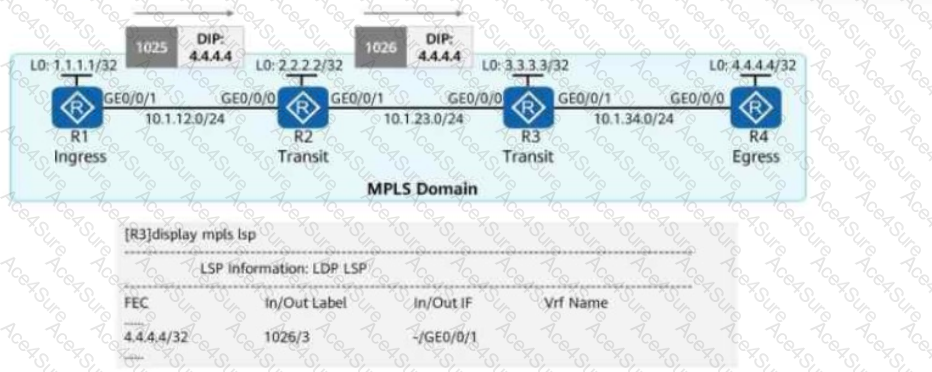Comprehensive and Detailed In-Depth Explanation:
To determine which devices perform MPLS label operations, we need to analyze MPLS forwarding behavior based on the roles of each router in the MPLS domain.
1. Understanding MPLS Label Operations
MPLS label switching involves three main operations:
Label Push (Ingress LSR - Label Imposition): The ingress router (R1) assigns an MPLS label to the packet.
Label Swap (Transit LSR - Label Forwarding): The transit routers (R2, R3) swap the label for the next-hop router.
Label Pop (Egress LSR - Label Disposition): The egress router (R4) removes the MPLS label before forwarding the packet to its final destination.
2. Examining MPLS Roles of Each Router
???? R1 (Ingress LSR) → Performs Label PUSH
R1 adds an MPLS label (1025) to the IP packet and forwards it to R2.
Operation: Push MPLS Label (Label Imposition).
✅ R1 performs MPLS label operations.
???? R2 (Transit LSR) → Performs Label SWAP
R2 receives a labeled packet (1025) from R1, swaps it with label 1026, and forwards it to R3.
Operation: Swap MPLS Label (Transit Label Forwarding).
✅ R2 performs MPLS label operations.
???? R3 (Transit LSR) → Performs Label SWAP
R3 receives label 1026 and swaps it with label 3, then forwards it to R4.
Operation: Swap MPLS Label (Transit Label Forwarding).
✅ R3 performs MPLS label operations.
???? R4 (Egress LSR) → Does NOT Perform MPLS Operations
R4 is the egress router and does not forward the packet further using MPLS.
The last router removes the MPLS label (Pop) and forwards the plain IP packet.
R4 is NOT performing MPLS label switching (swap or push), only popping the label before delivering the packet.
❌ R4 does NOT perform MPLS label operations.



